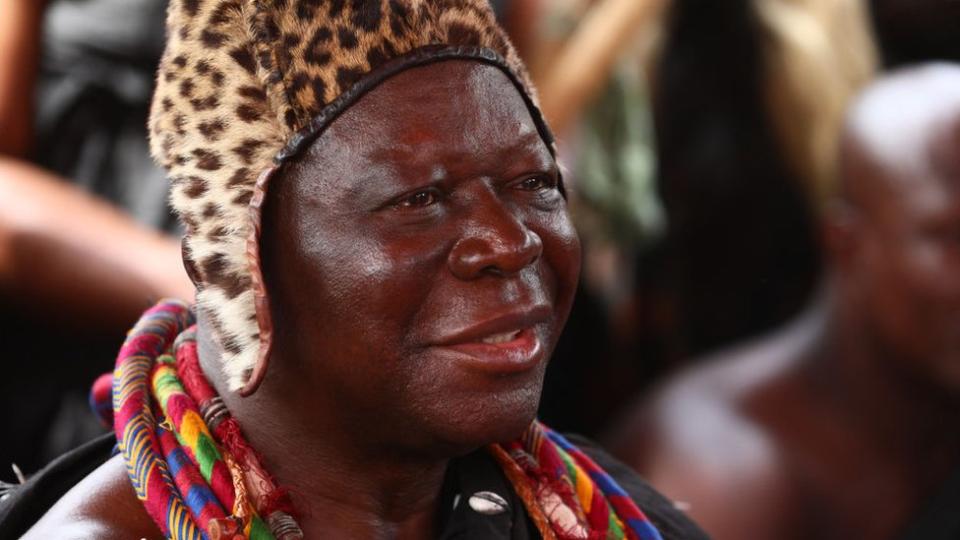[ad_1]
The UK has returned dozens of looted artefacts from what is today Ghana – more than 150 years after they were seized.
About 32 pieces of gold and silver were sent on long-term loan to the country by the Victoria and Albert Museum (V&A) and the British Museum.
It was stolen from the court of the Asante king, known as the Asantehene, during 19th-century conflicts between the British and the powerful Asante people.
The pieces are expected to be returned to the current king on Friday.
His chief negotiator, Ivor Agyeman-Duah, told the BBC that the pieces were currently in “good hands” in Ghana before they were officially received.
It is scheduled to go on display next month at the Manhyia Palace Museum in Kumasi, the capital of the Ashanti region, as part of the silver jubilee celebrations of the current Ashanti king, Otumfuo Osei Tutu II.
Among the artifacts recovered were a golden peace pipe, a state sword and golden badges worn by officials charged with purifying the king's spirit.
The gold artefacts are the ultimate symbol of Ashanti royal government, and are believed to be invested with the spirits of past Ashanti kings.
Nana Oforiata Ayem, Special Advisor to Ghana's Minister of Culture, had previously told the BBC that these pieces are “part of the soul of the nation” and that they are “pieces of ourselves that come back.”
The loan, which was negotiated with the king and not the Ghanaian government, runs for three years with an option to extend for another three years.
The Victoria and Albert Museum (V&A) loans 17 objects, including 15 from the British Museum.
Both museums said they were pleased to be able to return the loaned items as part of an important cultural collaboration.
Some of the UK's national museums – including the Victoria and Albert Museum and the British Museum – are prohibited by law from permanently returning disputed items to their collections, and loan deals such as this are seen as a way to allow objects to be returned to their countries of origin. .


The return of the Ashanti elements comes a month before the Asantehene Silver Jubilee celebrations.
The Ashanti people built what was once one of the most powerful and formidable states in West Africa, trading gold, textiles, and slaves, among other things.
The kingdom was famous for its military power and wealth. Even now, when the Asantehene shake hands on formal occasions, they may be so encumbered with heavy gold bracelets that they sometimes have an assistant whose job it is to support their arm.
Europeans were drawn to what they later called the Gold Coast because of stories of African wealth, and Britain fought frequent battles with the Ashanti in the 19th century.
In 1874, after the Ashanti attack, British forces launched a “punitive expedition”, in the colonial language of the time, sacking Kumasi and seizing many of the palace's treasures.
Most of the items returned by the Victoria and Albert Museum were purchased at auction on 18 April 1874 at Garrards, the London jeweler that held the Crown Jewels of the United Kingdom, while some of those loaned by the British Museum were looted during a subsequent conflict in 1895–96.
The return of the artifacts comes during an ongoing debate over what to do with other items exported from their original lands, including the Benin Bronzes and Elgin Marbles, also known as the Parthenon Sculptures.
Some countries claiming disputed artefacts fear the loans could be used to imply their acceptance of UK ownership.
However, others view these types of agreements as a way for Britain to confront the cultural legacy of its colonial past while building better relations for the future.
[ad_2]
Source

